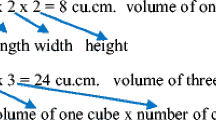Abstract
The introduction of in-class cooperative learning to a two semester large lecture college physics sequence was evaluated using both qualitative and quantitative measuremets. The first semester of the sequence was taught using traditional formats for lectures, tutorials and laboratories. A group of six students with apparent weaknesses in their academic backgrounds (from a class size of 200) was examined closely through weekly group meetings, journal writing and formal interviews. After several weeks, the group meetings became cooperative learning sessions, and the meetings appear to have helped the students to achieve at a higher level than expected. In addition, a classroom environment survey was administered during the first semester. During the second semester, in-class cooperative learning was implemented in tutorials. Student reaction to the new tutorial format, as measured by the survey, was positive. Field notes taken during the tutorials in the second semester revealed additional positive aspects of this reform. Many of the data support the hypothesis that in-class cooperative learning addressed student concerns about the learning environment and was perceived as an effective reform by most students.
Similar content being viewed by others
References
Brush, S. (1993).A case study of learning chemistry in a college physical science course developed for prospective elementary teachers. Unpublished doctoral dissertation, Florida State University, Tallahassee, Florida.
Burron, B., James, M. L. & Ambrosio, A. L. (1993). The effects of cooperative learning in a physical science course for elementary/middle level preservice teachers.Journal of Research in Science Teaching, 30, 697–707.
Cottle, P. D., & Lunsford, S. E. (1995). Increasing student participation in recitation.The Physics Teacher, 33, 23–25.
Erickson, F. (1986). Qualitative methods in research on teaching. In M. C. Wittrock (Ed.),Handbook of research on teaching (3rd ed.) (pp. 119–161). New York: Macmillan.
Fraser, B. J. (1994). Research on classroom and school climate. In D. L. Gabel,Handbook of research on science teaching and learning (pp. 493–541). New York: Macmillan.
Giancoli, D. C. (1995).Physics (4th ed.). Englewood Cliffs, NJ: Prentice Hall.
Guba, E. G., & Lincoln, Y. S. (1989)Fourth generation evaluation. Newbury Park, CA: Sage Publications.
Hart, G. E., & Cottle, P. D. (1993). Academic backgrounds and achievement in college physics.The Physics Teacher, 31, 470–475.
Hart, G. E. (1995).Obstacles to learning physics in an algebra based college physics course. Unpublished master's thesis, Florida State University, Tallahassee, Florida.
Heller, P., Keith, R., & Anderson, S. (1992). Teaching problem solving through cooperative grouping. Part 1: Group versus individual problem solving.American Journal of Physics, 60, 627–636.
Heller, P., & Hollabaugh, M. (1992). Teaching problem solving through cooperative grouping. Part 2: Designing problems and structuring groups.American Journal of Physics, 60, 637–644.
Honan, W. H. (1995), November 22). State universities reshaped in the era of budget cutting.New York Times, pp. A1+.
Kagan, S. (1989).Cooperative learning resources for teachers. San Juan Capistrano CA: Resources for Teachers.
McRobbie, C. J., & Tobin, K. (1995). Restraints to reform: The congruence of teacher and student actions in a chemistry classroomJournal of Research in Science Teaching 32, 373–385.
McRobbie, C. J., & Tobin, K. (in press). An analysis of the learning environment in a high school chemistry classroom.International Journal of Science Education.
Moscovici, H. (1994).An interpretive investigation of teaching and learning in a college course for prospective elementary teachers. Unpublished doctoral dissertation, Florida State University, Tallahassee, USA.
Roth, W. M., & Roychoudhury, A. (1994). Physics students' epistemologies and views about knowing and learning.Journal of Research in Science Teaching, 31, 5–30.
Slavin, R. E. (1983). When does cooperative learning increase student achievement?Psychological Bulletin, 94, 429–445.
Tobias, S. (1992).Revitalizing undergraduate science: Why some things work and most don't. Tuscon, Arizona: Research Corporation.
Tobin, K. (1993, November).Qualitative and quantitative approaches to research on learning environments. Paper presented at the 1993 International Conference on Interpretive Research in Science Education, Taipei, Republic of China.
Tobin, K., & McRobbie, C. J. (1996a). Cultural myths as restraints to the enacted science curriculum.Science Education, 80(2), 223–241.
Tobin, K. & McRobbie, C. J. (1996b). The significance of limited English proficiency and cultural capital to the performance in science of Chinese-Australians.Journal of Research in Science Teaching, 33(3), 265–282.
Vander Zanden, J. W. (1987).Social Psychology. New York: Random House.
Author information
Authors and Affiliations
Corresponding author
Rights and permissions
About this article
Cite this article
Cottle, P.D., Hart, G.E. Cooperative learning in the tutorials of a large lecture physics class. Research in Science Education 26, 219–231 (1996). https://doi.org/10.1007/BF02356433
Issue Date:
DOI: https://doi.org/10.1007/BF02356433




